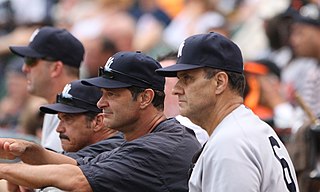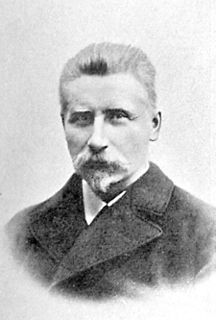Related Research Articles
Journalism is the production and distribution of reports on the interaction of events, facts, ideas, and people that are the "news of the day" and that informs society to at least some degree. The word, a noun, applies to the occupation, the methods of gathering information, and the organizing literary styles. Journalistic media include print, television, radio, Internet, and, in the past, newsreels.

A sports coach is a person coaching in sport, involved in the direction, instruction and training of a sports team or athlete.

The All-China Journalists Association(ACJA), previously known as the 'Chinese Young Journalist Association', was established in Shanghai on 8 November 1937. November 8th now marks 'National Journalists Day' in China. The society was established by Chinese wartime reporter Fan Changjiang and later organized and sponsored by the Chinese Communist Party (CCP). On 15 September 1949, the All China Journalist Association became the first Chinese media association to be formally recognized by, and integrated into, the International Federation of Journalists.
Self-censorship is the act of censoring or classifying one's own discourse. This is done out of fear of, or deference to, the sensibilities or preferences of others and without overt pressure from any specific party or institution of authority. Self-censorship is often practiced by film producers, film directors, publishers, news anchors, journalists, musicians, and other kinds of authors including individuals who use social media.

Viggo Lauritz Bentheim Hørup was a Danish politician, journalist and agitator. He was the father of Ellen Hørup (1871-1953). He was one of the most influential politicians of the Danish non-Socialist left wing.
Arts journalism is a branch of journalism concerned with the reporting and discussion of the arts including, but not limited to, the visual arts, film, literature, music, theater, and architecture.
Uusi Suomi was a Finnish daily newspaper that was published from 1919 to 1991. The headquarters was in Helsinki, Finland.
Peggy Joy Kleinplatz is a Canadian clinical psychologist and sexologist whose work often concerns optimal sexuality, opposition to the medicalization of human sexuality, and outreach to marginalized groups. She is a full professor of medicine and clinical professor of psychology at the University of Ottawa.
Hvedekorn is a Danish language literary magazine published in Copenhagen, Denmark, since 1920. It is one of the Danish publications which improved the cultural journalism in the country.
Cynthia Carter is a Reader in the School of Journalism, Media and Culture, Cardiff University, and co-founding editor of the journal Feminist Media Studies.
Slow journalism is a news subculture borne out of the frustration at the quality of journalism from the mainstream press. A continuation from the larger slow movement, slow journalism shares the same values as other slow-movement subsets in its efforts to produce a good, clean and fair product. Specialist titles have emerged around the world and proclaim to be antidotes to a mainstream media that is "filled to the brim with reprinted press releases, kneejerk punditry, advertorial nonsense and 'churnalism'". Instead, slow journalism tends to focus on long reports and in-depth investigations.
Vindrosen was a Danish modernist cultural and literary magazine existed between 1954 and 1974. It was one of the Danish publications which improved the cultural journalism in the country.
The Political Economy of Communications, news, or media, is a particular branch in Communication studies or media studies which studies the power relations that shape the communication of information from the mass media to its publics. This concept has been developed by media and political economy scholars such as; Dallas Walker Smythe, Herbert Schiller, Graham Murdock, Peter Golding, Vincent Mosco, Dan Schiller, and Robert W. McChesney. PEC analyzes the power relations between the mass media system, information and communications technologies (ICTs) and the wider socioeconomic structure in which these operate, with a focus on understanding the historical and current state of technological developments.
In automated journalism, also known as algorithmic journalism or robot journalism, news articles are generated by computer programs. Through artificial intelligence (AI) software, stories are produced automatically by computers rather than human reporters. These programs interpret, organize, and present data in human-readable ways. Typically, the process involves an algorithm that scans large amounts of provided data, selects from an assortment of pre-programmed article structures, orders key points, and inserts details such as names, places, amounts, rankings, statistics, and other figures. The output can also be customized to fit a certain voice, tone, or style.

Multimedia journalism is the practice of contemporary journalism that distributes news content either using two or more media formats via the Internet, or disseminating news report via multiple media platforms. It is inseparably related to the media convergence of communication technologies, business integration of news industries, and editorial strategies of newsroom management.
"Crucified Boy" was the name of a false anti-Ukrainian atrocity propaganda story which was disseminated in Russia in July 2014, during the war in Donbas.
In journalism, the term death knock refers to the practice of journalists contacting people with a close relationship to a deceased individual, in an attempt to garner their thoughts and feelings regarding the death, and also gather other information.
T.J. Thomson is a senior lecturer in the School of Communication at the Queensland University of Technology in Brisbane, Australia, and a chief investigator at its Digital Media Research Centre, where he leads its News, Media, and Journalism Research Group. He teaches and researches on visual communication topics, especially media representation, the production and reception of visual journalism, and visual culture. He has been an officer in several national and international societies and has served as the associate editor of Visual Communication Quarterly since 2017.
Dr Penny O'Donnell is a bilingual media scholar, author and radio journalist, best known for her research on the implications of digital transformation for journalism employment across world regions, comparative media, and journalism and Southern theory.
References
- 1 2 Hanusch, Folker (2013). Lifestyle Journalism. Routledge. p. 4. ISBN 978-1-317-84998-8.
- ↑ From, Unni; Kristensen, Nete Nørgaard (2020). "Unpacking Lifestyle Journalism via Service Journalism and Constructive Journalism". In Vodanovic, Lucia (ed.). Lifestyle Journalism: Social Media, Consumption and Experience. Routledge. p. 13. ISBN 978-1-351-12336-5.
- ↑ Fürsich, Elfriede (2012-02-01). "Lifestyle Journalism as Popular Journalism". Journalism Practice . 6 (1): 12–25. doi:10.1080/17512786.2011.622894. ISSN 1751-2786. S2CID 142565481.